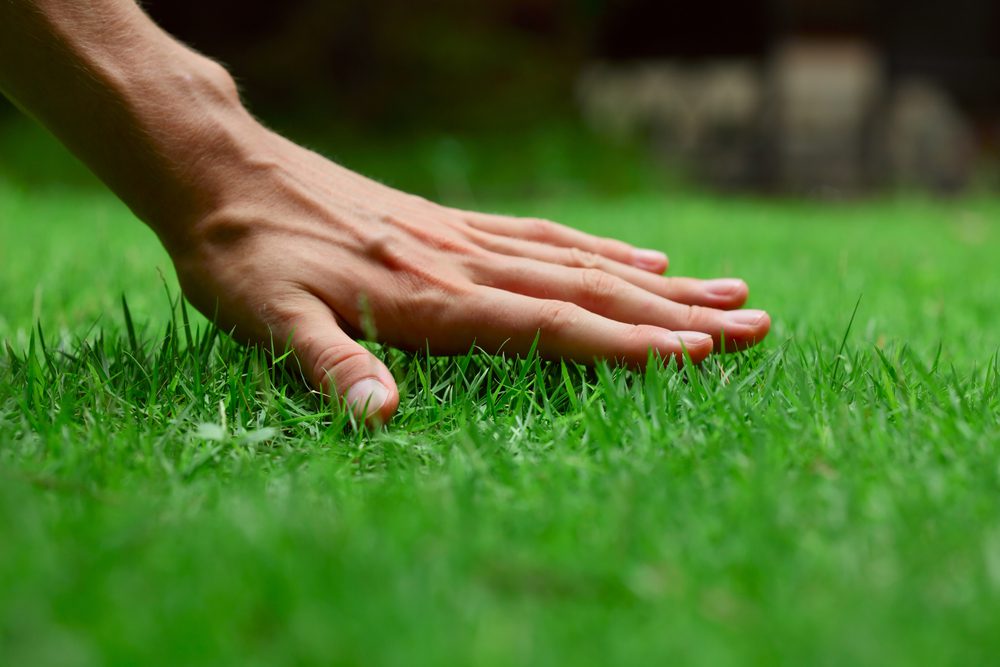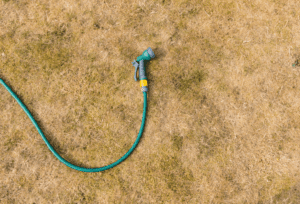Spring is the time to prepare your lawn for a successful growing season. This is when to start spring lawn care, weed prevention, fertilization, watering, mowing, and more to get that lush, green lawn you want in the summer months.
Examine Your Lawn
Before getting your lawn ready for the spring growing season, you need to take into account the current condition of your lawn.
The lawn care tasks and products you use will depend on your lawn’s:
- Grass type: Different grass types have different needs, so make sure you know what type of grass you have and the specific care it needs.
- Soil type: Your soil type can affect your lawn’s health. You can conduct a soil test to determine its pH level and nutrient content.
- Shade and sun exposure: Some grass types thrive in full sunlight while others do better in shade. Take note of the areas of your lawn that receive the most sunlight and shade during the day.
- Drainage: Poor lawn drainage can lead to standing water and root rot. Check for areas of your lawn that collect water after rainfall.
- Weeds and pests: Take note of any weeds or pests in your lawn to determine what products you need to use to treat them.
Spring Lawn Care Steps
Raking
Raking in the spring removes lingering fall leaves and grass that did not survive the winter. If you don’t remove these dead blades, they add to your lawn’s thatch layer. The thatch layer is a tight, intermingled layer of live and dead organic matter that builds up between the layer of actively growing grass and the soil underneath. If the thatch layer becomes excessive, it can restrict the movement of air, water, fertilizer, and other nutrients that are necessary for growth.
Use a spring-tine rake with a strong upward pull to remove dead grass. Rake when the soil isn’t soft and muddy or you risk pulling up healthy grass crowns.
Aerating
Aeration is the solution to compacted soil and the key to a truly healthy lawn. How often you should aerate your lawn depends on soil type and how often you use your lawn.
Late spring to early summer is the ideal time to aerate warm-season grasses, and fall is the best time for cool-season grasses. But if you didn’t aerate in the fall, you can still do it in early spring.
Fertilizing
For spring growth, apply fertilizer about three weeks after the grass starts greening. This usually corresponds to the time after you can complete two or three mowings. If you apply fertilizer too early, you risk feeding weeds and creating fertilizer run-off. Early applications can also trigger lush blade growth when roots have not yet started their spring growth spurt. Use a fertilizer/pre-emergent product to maximize early spring growth while laying down a chemical barrier, which is important to reduce crabgrass and other annual grassy weed invasions.
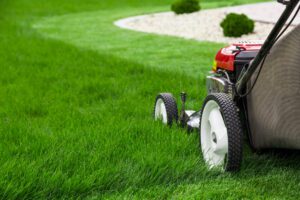
Mowing Your Lawn in the Spring
Mowing your lawn is an essential step in preparing for spring growth. Before you start, you should sharpen the blades on your mower, as dull blades can damage the grass and make it more susceptible to disease and pests. You should also adjust the cutting height of your mower based on the type of grass type in your lawn. Different types have different ideal cutting heights, so be sure to research the appropriate height for your specific grass type.
After the first mowing, don’t remove more than one-third of the grass blade at a time. Cutting off too much can shock the grass and cause it to turn brown. Vary the direction you mow to avoid creating ruts or patterns in the grass, and overlap each pass slightly to ensure even cutting,
When Should I Start Mowing in Spring?
When your soil is no longer wet and soggy, and your grass has grown at least two inches tall, it’s time to mow. This is usually around mid-March. Mowing wet soil can create tracks and ruts that take weeks to disappear. Mowing too early, before the grass has begun to grow and thicken up, also exposes the soil and winter weed seeds to sunlight and leads to weeds outgrowing the grass. The first time you mow, move the cutting height to the highest setting to remove dead, matted grass and debris while leaving a canopy of grass blades over the soil to cover weed seeds.
How Often Should I Mow My Lawn?
At first, you should mow your lawn every two weeks. As the grass begins to turn green and grow, move to a weekly mowing schedule and reduce mowing heights to 3 to 3.5 inches for cool-season grasses and 2 inches for warm-season grasses like Bermudagrass. Fast-growing grass mowed at no less than 3 inches will inhibit weed populations from taking over your lawn.
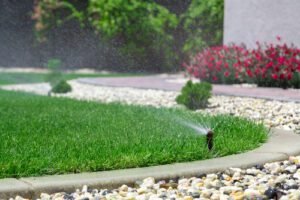 Watering Your Lawn During Spring
Watering Your Lawn During Spring
The frequency and duration of watering your lawn depends on the grass type, soil type, and weather conditions. It is generally recommended to water your lawn once a week, giving it 1 to 1.5 inches of water at a time.
It’s important to note that overwatering can be just as damaging as underwatering. Too much water can lead to shallow root growth, making your lawn more vulnerable to pests and diseases.
You can perform a simple test to determine if your lawn needs watering. Step on the grass, and if it springs back up, it doesn’t need watering yet. If it stays flat, it’s time to water it.
How Often Should I Water My Lawn During Spring?
For temperatures in the 60s and below, you can water your lawn once a week. You can increase the frequency of watering to multiple times per week once temperatures consistently stay in the 70s.
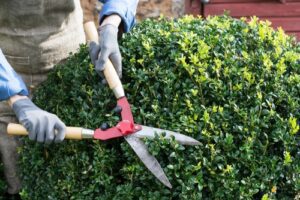 Tree & Shrub Care During Spring
Tree & Shrub Care During Spring
Trees and shrubs should be assessed for pests and diseases, treated if necessary, and fertilized in the spring.
How To Assess Tree & Shrub Health
If your trees and shrubs are growing poorly, and have low-quality flowering and off-color leaves, this can indicate poor soil quality. Trees and shrubs can be negatively impacted by pest infestations, diseases, drought conditions, poor soil, soil compaction, high winds, and overly wet conditions.
Tree & Shrub Solutions
Depending on the cause of tree and shrub problems, they can be addressed by increasing watering, not mulching too deep, and treating diseases and pests.
Regular root-zone fertilizations during the spring and fall seasons also help improve soil quality and lead to healthier plantings.
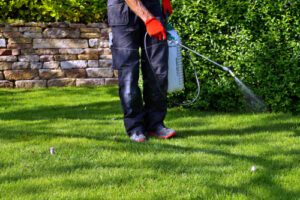 Weed & Pest Control During Spring
Weed & Pest Control During Spring
Keeping your lawn free of weeds and pests is vital in achieving the lush, green look you want.
How To Identify Different Weeds & Pests
Many different types of weeds can invade your lawn, including broadleaf weeds and grassy weeds. Broadleaf weeds have wide leaves and include dandelions, clover, and chickweed. Grassy weeds have narrow leaves and include crabgrass and foxtail.
Pests that can infest your lawn include grubs, chinch bugs, and armyworms.
You can use an online identification tool or bring a sample to your local garden center to identify weeds and pests. That way, you can choose the appropriate method to treat them.
Weed & Pest Control Solutions
Chemical solutions include using herbicides and pesticides. Make sure to follow instructions and wear protective clothing when using these products to avoid harming your lawn or the environment. Avoid using them on windy days.
The best weed prevention is an early treatment or pre-emergent weed control product applied in the spring. To stop the growth of germinating annual grassy weeds like crabgrass, the product must be applied before germination takes place.
For summer broadleaf weeds, a post-emergent weed control product must be applied while the weed is actively growing.
Weed control products can be liquid or granular, and data has shown that chemical-based products produce the best results. Organic products have not been shown to effectively control weeds.
The same is true for pest control solutions. If you don’t want to handle chemicals, you can contact a lawn care company to apply weed and pest control products at the right seasonal windows.
Get Personalized Lawn Care With ExperiGreen
Don’t worry about handling lawn care on your own. With ExperiGreen, you can get a comprehensive lawn program that takes care of fertilization and weed control, perimeter pest control, and more, during all four seasons of the year.
Our lawn programs include pre- and post-emergent weed control, season-long fertilization applications, superior weed prevention in the spring, and more, with up to 12 visits per year. We also offer additional services as necessary.
Ready to get real results? Contact us for a free instant quote today.

